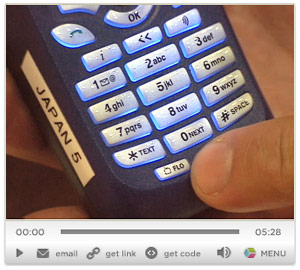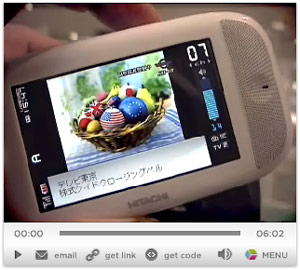Proof is in the Mobile Pudding
The good folks over at CIAJ (Communications and Information Network of Japan) issued a press item last week to announce results of their annual study on cellular phone use. According to CIAJ, “The study aims to capture on-going changes in the domestic mobile communications market and has been conducted since 1998.”
The study includes some interesting results related to actual usage of mobile Internet services, including email, music, GPS, mobile TV, e-wallets, number portability and more. The organization says they mailed questionnaires to 600 cellular phone users (male: 303, female: 297; by age group, under 20: 102, twenties: 101, thirties: 108, forties: 95, fifties: 95, sixties and above: 99) residing in the larger Tokyo and Osaka metropolitan areas from the end of March through April, 2006…


 SoftBank
SoftBank  NHK and five commercial TV broadcasters held a splashy launch party in Tokyo’s central Shinjuku train station on Saturday afternoon, announcing the official start of terrestrial ‘One-Seg’ broadcast services. The carriers have lined up accordingly: NTT DoCoMo has partnered with Nippon Television and Fuji Television, while KDDI has forged a partnership with TV Asahi.
NHK and five commercial TV broadcasters held a splashy launch party in Tokyo’s central Shinjuku train station on Saturday afternoon, announcing the official start of terrestrial ‘One-Seg’ broadcast services. The carriers have lined up accordingly: NTT DoCoMo has partnered with Nippon Television and Fuji Television, while KDDI has forged a partnership with TV Asahi.